When a dog has an open wound, it’s important to take the necessary steps to prevent them from scratching or licking the area and making it worse. Scratching can cause infection, further injury, and delay healing. Fortunately, there are several ways you can keep your dog from scratching their wound and help ensure they heal quickly and safely.
Why Should You Prevent Your Dog From Scratching Or Licking A Wound?
It is important to keep your dog from scratching or licking an open wound to avoid further complications, such as infection and delayed healing. Dogs have specialized bacteria in their saliva which can lead to infections upon contact with the wound. Additionally, dogs often scratch when they are itchy, causing further irritation and trauma to the wound. Finally, excessive licking or scratching can delay healing or even cause the wound to open up again. [1]
Why Do Dogs Scratch Their Wounds?
Dogs often scratch at wounds to relieve the itchiness and discomfort caused by the healing process. Scratching can damage or further aggravate the wound, making it difficult for it to heal properly. It is important to keep a dog from scratching their wounds in order to ensure that they heal quickly and without any further complications.
The Wound Itches
Dogs can’t verbally tell us that their wound is itchy, but they will often scratch or lick the area to try and relieve the discomfort. This scratching can damage the wound, however, causing further irritation and potential infection. It’s important to take measures to prevent your pup from further injuring himself in this way.
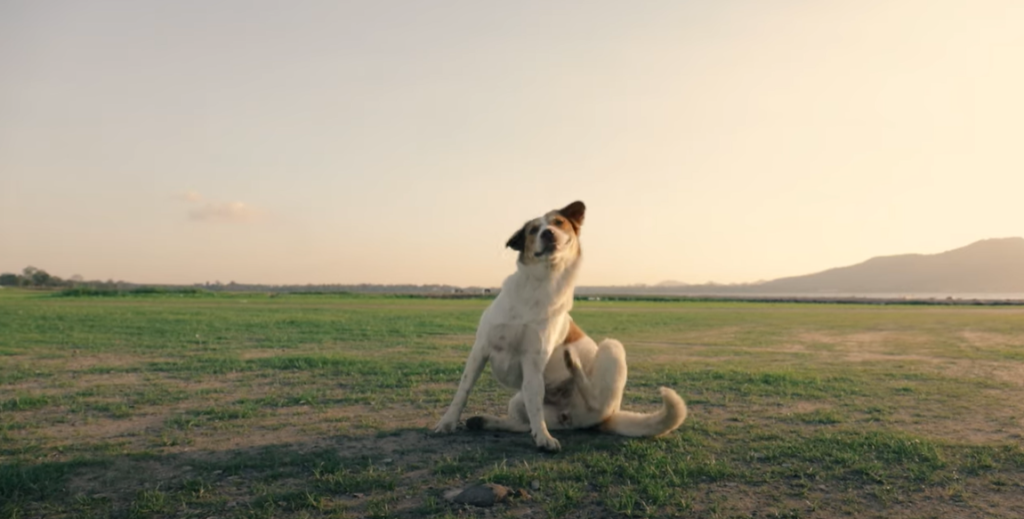
Scratching Releases Serotonin
Scratching is a natural instinct for dogs, and it releases serotonin, which is a feel-good hormone. This can temporarily ease the discomfort of an injury or wound. However, scratching should be discouraged when it comes to open wounds because it can cause further damage. Keeping your dog from scratching their wound will help promote healing and reduce the risk of infection. [2]
Ways To Stop Your Dog Scratching A Wound
Keeping your dog from scratching at a wound is essential to the healing process. Here are some tips for preventing and treating your dog’s wounds:
Get A Well-Fitting Elizabethan Collar Or Inflatable Collar
If you have a small wound on your pup, consider using an Elizabethan collar or inflatable collar. This type of device prevents the dog from reaching the area and causing further damage. An Elizabethan collar is a plastic cone-shaped device that fits around your pet’s neck and covers most of their body. Inflatable collars are air-filled and wrap around the circumference of your dog’s neck. They are lightweight and adjustable, which makes them comfortable to wear.
Bandage The Wound
Once the wound has been cleaned, it’s important to bandage it. This will help keep the wound from further infection and also protect against a dog scratching at the site. The best type of bandage to use is an elastic wrap found in most drugstores and pet stores. Wrap loosely enough so that there is no restriction on movement but tightly enough that the wound is covered. Additionally, make sure to cover any open areas of skin so that the dog cannot reach them. If the wound is located in an area that a bandage will not stay on (such as a paw), a cone may be necessary to prevent scratching at the site.
Have Them Wear A T-Shirt Or Recovery Suit
One way to keep your dog from scratching a wound is to have them wear a t-shirt or recovery suit. This type of clothing item covers the wounded area, protecting it from further damage. It also prevents the dog from licking and chewing the wound, which can slow down healing time. Additionally, some recovery suits come with straps and closures that will help keep them securely in place. This can be especially helpful if your dog is particularly active or has a habit of scratching and licking their wounds.
Try An Anti-Itching Cream And Anti-Licking Spray
To keep your dog from scratching or licking at a wound, use an anti-itching cream or spray. You can apply the cream or spray directly to the wound and its surrounding area. It’s best to follow the instructions on the product label for topical application. This will help reduce irritation and discomfort caused by itching or licking. Additionally, be sure to keep an eye on the wound for any signs of infection, such as redness, swelling, or discharge. If you notice any of these signs, contact your veterinarian immediately.You can also purchase special dog muzzles and cones that prevent them from scratching or licking their wounds.
Be sure to use the proper size for your dog and check that it fits securely and comfortably. Finally, if your dog is in pain or discomfort, talk to your veterinarian about giving them a mild sedative or painkiller to help manage the itching and scratching.
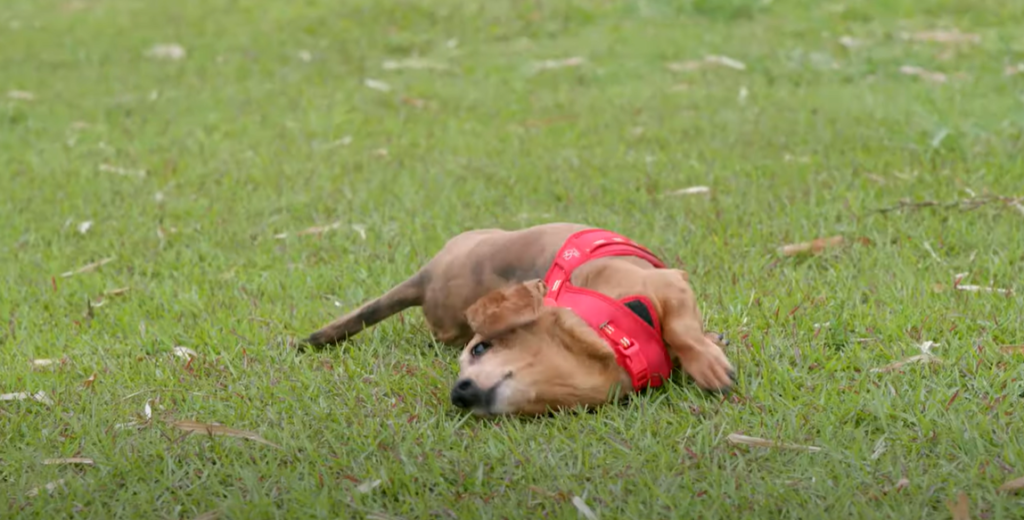
Rely On Distraction Tactics
Often, the best way to prevent a dog from scratching its wound is by distracting it. This can be done in several ways. One option is to give your pup a toy or treat that will divert its attention away from the wound. Alternatively, you can engage it in an activity such as playing fetch, running around outdoors or going for walks. This will help keep the dog distracted and, consequently, not scratching its wound.
Avoid Using Vet-Unapproved Products On The Wound
The vet may have prescribed an ointment or topical solution to help treat the wound and keep it from becoming infected. Avoid using any products on the wound that are not approved by your vet, as they can harm the dog. Additionally, be sure to carefully read the instructions on the product label for proper dosage and usage – use only as directed. [3]
How Can I Stop My Dog From Licking A Wound?
If your dog has a wound that needs to heal, it’s important to keep them away from licking or scratching at the area. The constant licking can delay healing and introduce bacteria into the wound.
Use A Bandage With Antibiotic Ointment Or Cream
Cover the wound with a bandage that contains antibiotic ointment or cream. This will help prevent infection and reduce inflammation, which may stop your dog from licking the area. Be sure to change the bandage regularly and keep an eye on the wound for any signs of infection.
Dress Her In A T-Shirt Or Recovery Suit
One way to keep your dog from scratching a wound is to dress her in a t-shirt or recovery suit. This may not be the most attractive ensemble for your pup, but it will do an effective job of keeping her from reaching and scratching the wound. A t-shirt should fit snugly around the torso to prevent her from lifting her paw and scratching it on her chest. Alternatively, a recovery suit is made from a breathable material that fits more tightly to the body and helps prevent any type of movement that could lead to scratching. Make sure you change the garment regularly and check for signs of infection or irritation under the fabric.
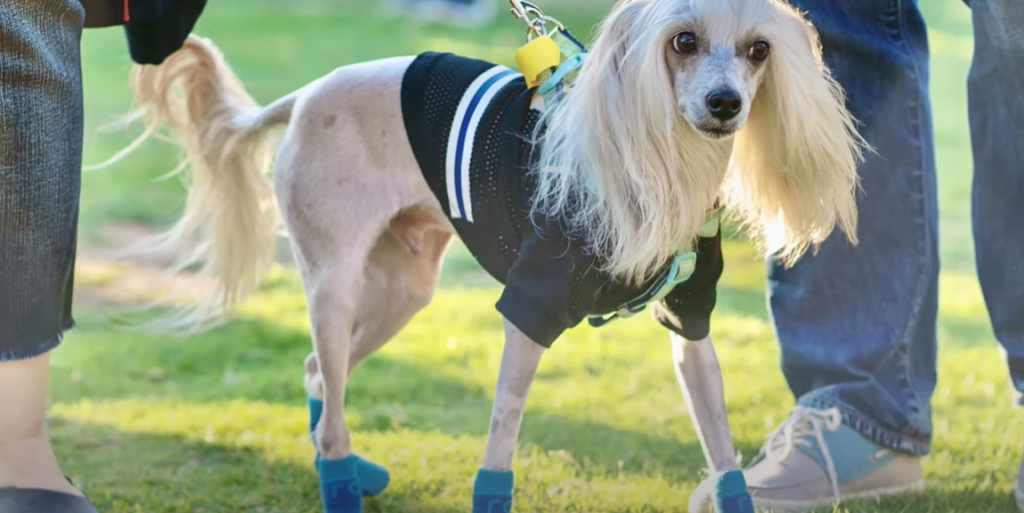
Put Dog Boots On Her
If your dog is prone to scratching their wounds, you can try putting boots on her feet. This will help prevent her from injuring the wound further, as she won’t be able to get a grip with her claws and scratch it. Make sure that the boots aren’t too tight or uncomfortable for your pup and that they are properly fitted for them.
Use Anti-Lick Spray Or Strips On Her
Anti-lick products are a great solution for keeping dogs away from their wounds. These products contain an unpleasant taste or smell, which helps deter dogs from licking and chewing on the wound. Some of these sprays also contain antiseptics and antibiotics, which can help speed up the healing process. You can apply anti-lick spray or strips directly onto the wound. Alternatively, you can also apply it around the affected area to help discourage your dog from licking her wound. Make sure to follow the instructions on the product label for best results. [4]
FAQ
How do you protect an open wound on a dog?
You can protect an open wound on a dog by keeping it clean, dressing the wound and preventing your dog from itching or scratching it. Keeping the wound clean is important to help avoid infection and speed up healing. To keep a wound clean, use a mild soap and warm water solution to gently wash away any dirt or debris. After washing the wound, pat it dry and apply an antibiotic ointment or cream. It is also important to use a bandage to cover the wound and keep it from getting irritated. If the wound was caused by a bite, consult your veterinarian for additional treatment as rabies may be a concern. In addition to keeping the wound clean, you should also prevent your dog from scratching or licking the wound. This can be done by using an Elizabethan collar (also known as a cone collar) when necessary. An Elizabethan collar is a protective device worn around a dog’s neck to prevent them from reaching and damaging their wounds with their mouth or paws.
What can I put on my dog’s scratch wound?
The best option for treating a wound from scratching is to use a combination of antiseptic and antibiotics. A veterinarian can recommend the proper antiseptic, such as diluted hydrogen peroxide or chlorhexidine solution, and antibiotics, such as penicillin or amoxicillin. In order to get the most effective treatment, both products should be applied directly to the wound.
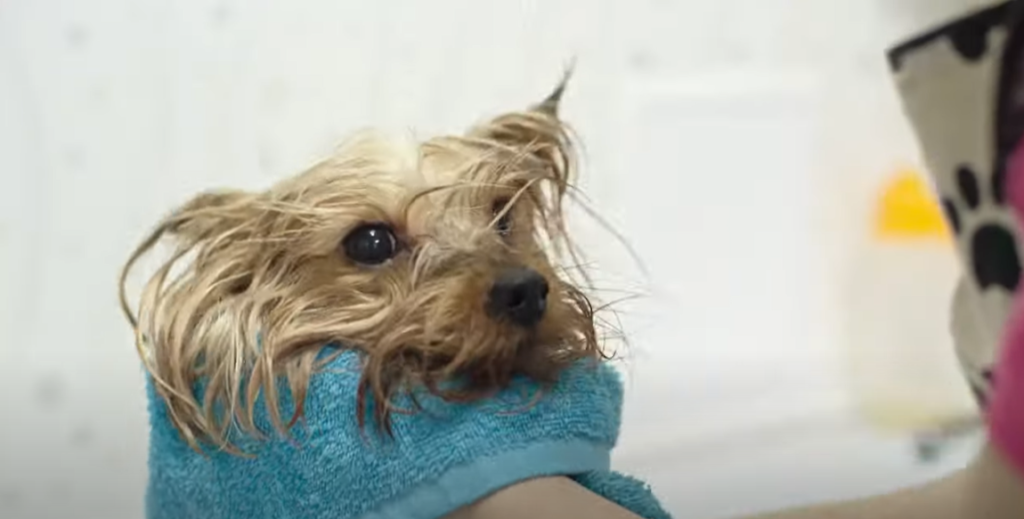
What can I do if my dog is scratching till it bleeds?
If your dog’s wound is bleeding or otherwise open, it is imperative that you take steps to stop the behavior. Start by keeping your pet on a short leash and closely monitoring their movements. Avoid any activities that might cause them to scratch or bite at the wound, such as playing rough games. You should also try to distract them with positive reinforcement whenever they attempt to scratch at the area. If possible, use a collar or an Elizabethan cone (also known as an e-collar) to physically block your pet’s access to the wound. If you cannot keep your pet from scratching, then cover the wound with a light dressing that will not irritate the skin.
How do you keep a dog from messing with a wound?
It’s common for a dog to try and bite, lick, or scratch at an open wound. This can be dangerous as it increases their risk of infection and further injury. The most important step in keeping your pup from messing with a wound is to make sure that the area is properly cleaned and covered. A bandage should be applied to the wound and kept secure so that it does not come off. Additionally, you may consider using an Elizabethan collar, also known as a “cone of shame,” which prevents your pup from accessing the wound area. If the wound is on their face or neck, you can make a makeshift cone by cutting off the bottom of a milk jug or soda bottle and taping it around their neck. If possible, keep your dog in a room that is off-limits so that they are not able to get to the wound as easily. Finally, provide plenty of distractions for them such as toys and treats so that they do not focus on the wound. With some diligent effort, you can keep your pup from messing with their wound and help them heal quickly.
How do I stop my dog from messing with a wound?
If your dog has a wound, it is important that you take steps to make sure they do not interfere and disrupt the healing process. Here are some tips to help keep your pup from scratching or licking their wound:
- Keep the area clean by regularly changing any bandages and cleaning the wound with an appropriate antiseptic solution.
- Apply a pet-safe wound ointment to help protect the area and aid in healing.
- Try an Elizabethan collar to keep your pup from directly accessing the area of injury, if necessary.
- Distract your pup with toys or treats when near the wounded area to help break any anxious or curious behaviors.
- Check the wound daily for signs of infection, redness, swelling, or discharge to determine if a vet visit is necessary.
- If you suspect your pup may be in pain, give them an appropriate dose of anti-inflammatory medication as prescribed by your veterinarian.
Can I put Neosporin on my dog’s wound?
Neosporin is an antibiotic cream that can be used to help reduce infection and promote healing in a wound. However, it should not be applied directly on the wound itself as it could irritate the skin or cause further discomfort for your dog. For this reason, you should only use Neosporin on your dog’s wound if you have consulted with your vet first. Your veterinarian can provide advice on how to properly apply the cream to ensure that it is being used safely and effectively. Additionally, there are topical antibiotics specifically designed for use on dogs that may be a better choice for treating your pet’s wound.
Will a dog’s wound heal on its own?
In most cases, yes. Most minor wounds, such as scrapes and cuts, will usually heal on their own without any medical intervention. Many more serious wounds, however, may require veterinary care and medication in order to properly heal and prevent infection. It is important to keep an eye on your dog’s wound and watch for signs of infection, such as redness and swelling. If you notice any changes or your dog seems to be in pain, it is important to seek veterinary care right away.
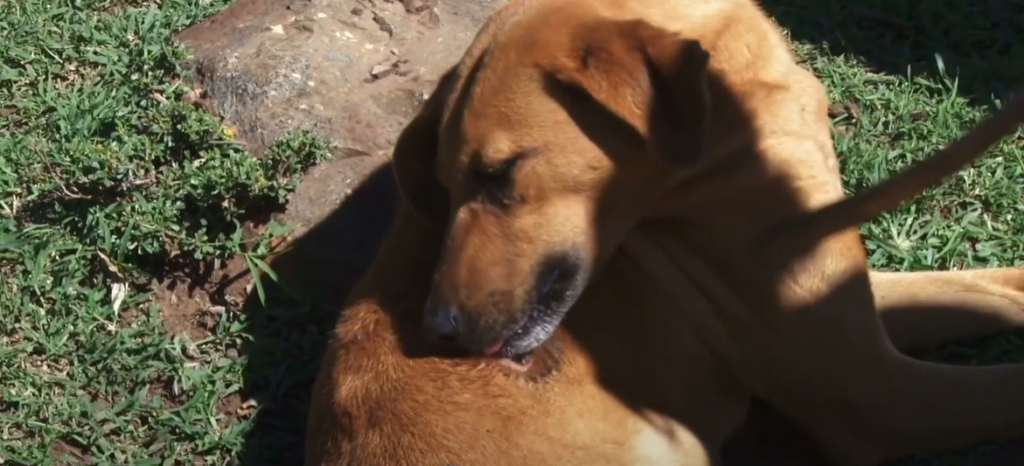
Is Vaseline good for cuts on dogs?
Vaseline may be used to help keep a dog’s wound clean while it is healing. It can also protect the wound from becoming infected by keeping out dirt and other irritants. However, Vaseline should not be used on an open or bleeding wound. In these cases, you should use a sterile saline solution to help clean the area. In addition, Vaseline should not be used on deep or large wounds as it may prevent the wound from healing properly. If you choose to use Vaseline, apply it lightly and regularly wash the area with a gentle soap and warm water. For more severe wounds, seek veterinary advice.
Can I put socks on my dog to stop scratching?
Putting socks on your dog is not always an effective way to stop them from scratching a wound, as dogs are generally able to remove the socks. In addition, covering up the wound with a sock can prevent it from getting much needed airflow and may worsen the condition of the wound. Therefore, it is best to use other methods that will more effectively prevent your dog from scratching the wound.
Why is my dog biting himself raw?
Your dog may be biting himself raw for a variety of reasons, including allergies, irritations from fleas, other parasites or insects, boredom or stress. In some cases, this behavior can also indicate an underlying medical condition such as skin disease or infection. If your dog is exhibiting this behavior it is important to have him checked out by a veterinarian to rule out any potential medical issues. Once any underlying medical conditions have been ruled out, you can work on managing the behavior. The most effective way to keep a dog from scratching or biting a wound is to provide distraction and positive reinforcement for desirable behaviors. Exercise and play are great ways to help your dog burn off excess energy and become more relaxed. Interactive toys, such as a Kong filled with treats or peanut butter can also be used to help relieve boredom and stress.
Useful Video: Treating Open Wounds on Your Dog – PET | TAO Holistic Pet Products
Conclusion
Keeping a dog from scratching or biting a wound can be difficult, but it is an important part of keeping your pet healthy. If you notice your dog has sustained a wound, it is best to seek veterinary care right away. Additionally, using methods such as distraction and positive reinforcement are important for preventing further damage or infection in the wound. Vaseline can also be used to protect the wound from becoming infected, though it should not be used on open or bleeding wounds. Ultimately, with proper care and medical attention, your pet’s wound can heal quickly and safely.
References:
- https://www.animalwised.com/stop-your-dog-from-scratching-a-wound-633.html
- https://wagwalking.com/wellness/how-to-prevent-your-dog-from-scratching-a-wound
- https://doggysaurus.com/how-to-stop-dog-from-scratching-wound/
- https://petdogowner.com/how-to-stop-my-dog-from-scratching-a-wound-face-shoulder-neck/

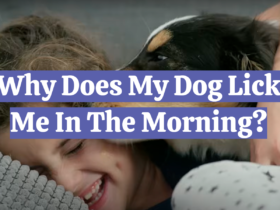



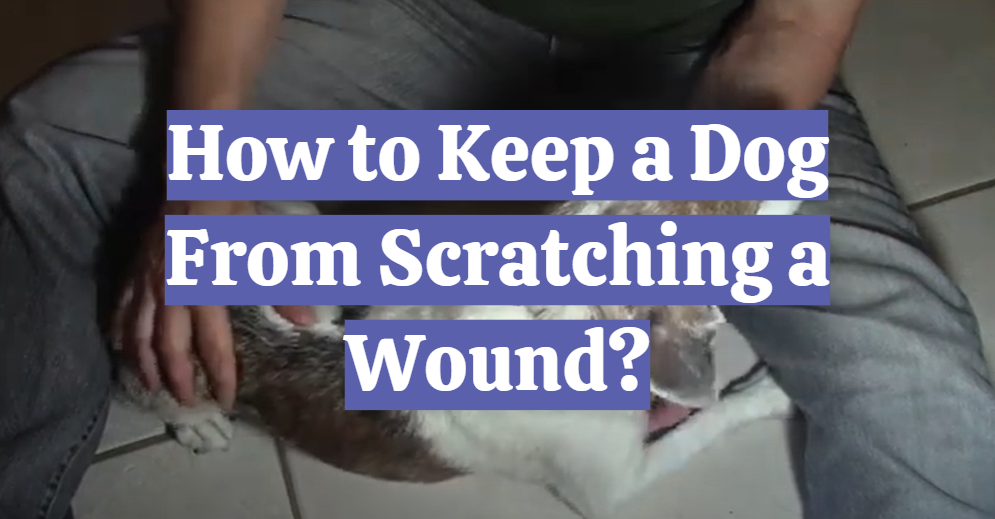
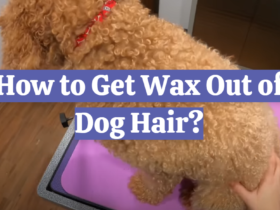



Leave a Reply